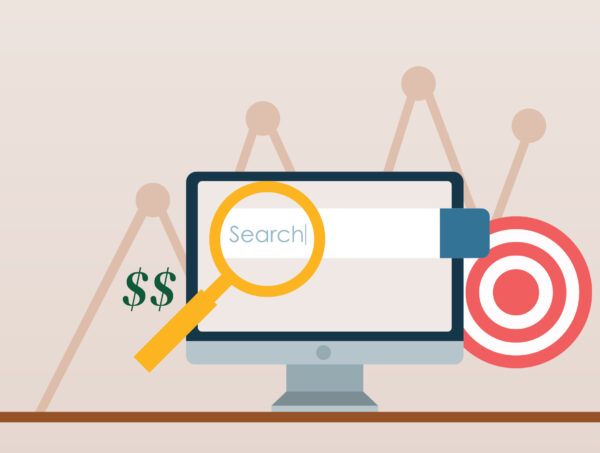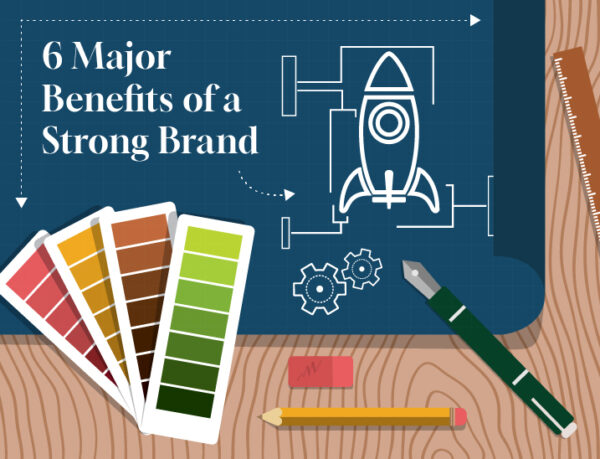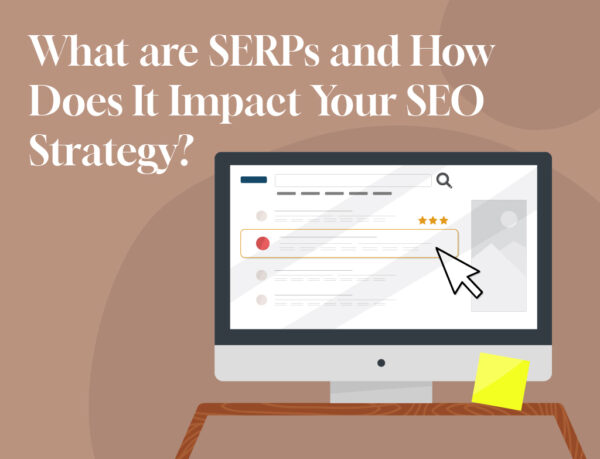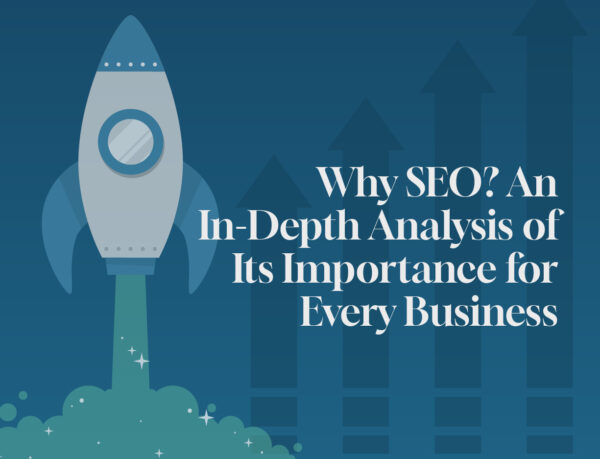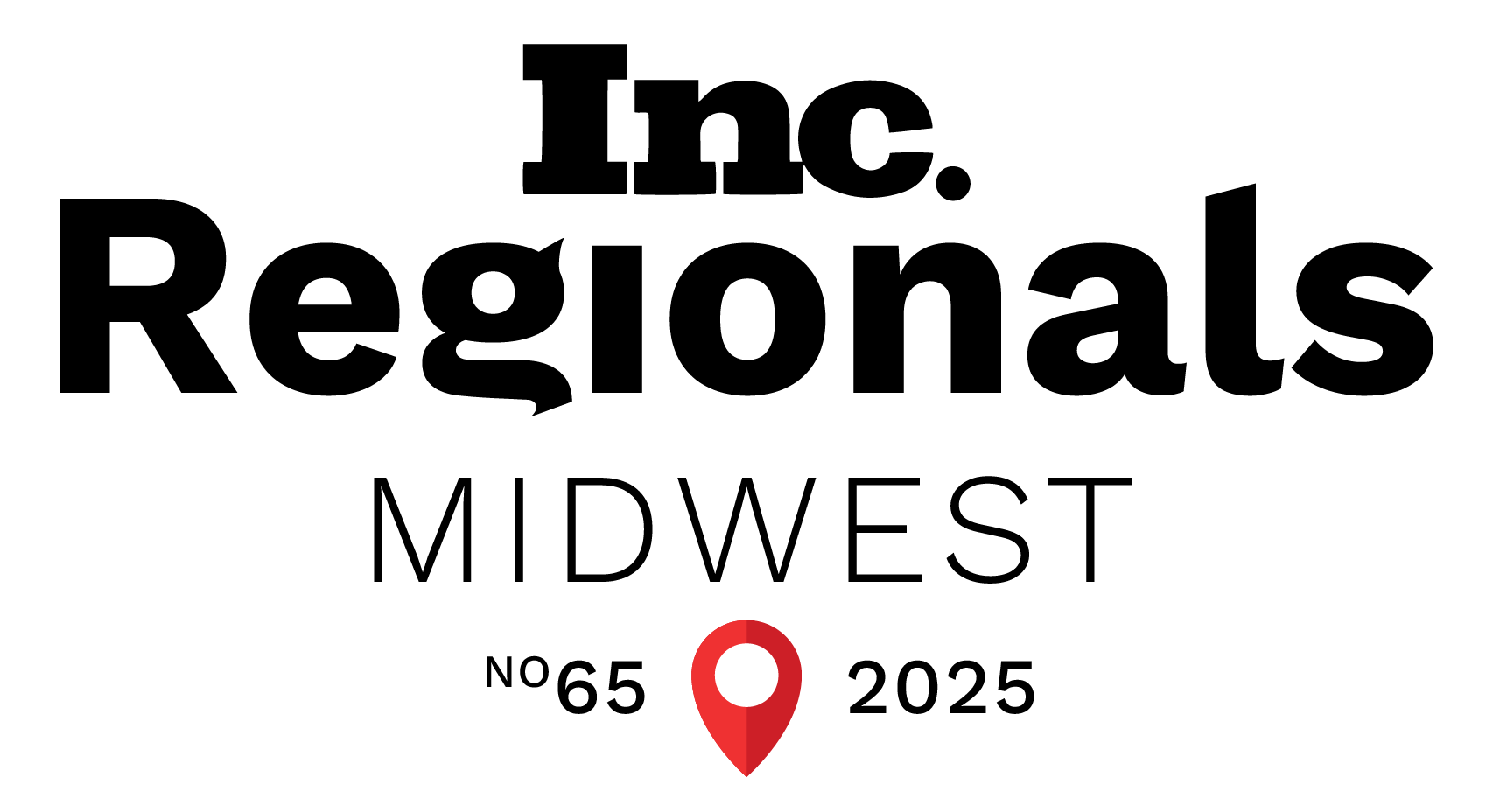Here’s What You Need to Know About Customer Touch Points

In This Article
Remember when you used to use roadmaps to get from one place to another—the passenger directing the driver to turn right or left at the McDonald’s or knowing you were close to your destination after you crossed the bridge? But what about when you missed the turn (or were driving north instead of south…hey, it can happen!), and you would have to turn around or find an alternate route?
Okay, that was a nice trip down memory lane to the days before local search engine optimization (SEO) and Google Maps. But what does it have to do with customer touch points? Well, customer touch points are like those indicators on a map that help you reach your final destination.
As your customer moves through their buyer’s journey, they go from point A to point B. Optimizing your customer map will help smooth the customer journey from both the customer’s and your company’s perspective. So let’s get started!
What Are Customer Touchpoints?
Before we can talk about strategizing for your engagement touch points, we need to first answer the question: “What are touch points?”
Customer touch points are specific, identifiable interactions that your customer has with your business throughout their buying process. At each consumer touch point, the customer experiences and connects with your brand. Their reaction to that interaction determines how they continue to feel about your brand and business.
Knowing your customer touch points—and being intentional about making each interaction enjoyable—is beneficial for both the customer on their buyer’s journey and your business.
Customer Touchpoints Are All About the Details
Consumer touch points make it possible to identify when your customer is making contact with your brand. Let’s circle back to our map analogy. If you know your customer is going to be at a certain spot along their buyer’s journey, you want to ensure they have a positive experience with your brand. If not, they may take a left turn instead of a right turn, going in a totally different direction than what you wanted.
Yes, you may have a great brand, design, and product. But customer touch points are all about the details. The big picture stuff is great, but ensuring that the nuances of your business are optimized can make or break the customer’s experience with—and thus the opinion of—your business.
Find out more about the benefits of a strong brand on our blog.
Channel vs. Touchpoint
It’s easy to get channels and touch points confused. However, channels and touch points are different. Channels are the location where your customers are interacting with you, like via social media or your website. Touch points, or engagement touch points, are the engagements/interactions customers have with you, such as a direct message (DM) or reading your blog.
Why Are Touchpoints So Important?
Knowing your consumer touch points means that you can map out the buyer’s experience, also called a customer journey map.
A customer journey map is the order and location of your customer touch points. Once they are mapped out, you can annotate your map to indicate a consumer’s response to a particular touch point. You can then get a visual of how the buyer’s experience went.
When you know your customer’s experience at every touch point, you can adjust what you do at each touch point to make for a better experience. If a negative experience occurs, you know which customer journey touch points need more work.
Customer Touchpoint Feedback
Since each touch point is a point of contact, you have the ability to get feedback from your customers on why your touch point marketing efforts are or are not working.
Getting customer feedback will help you know how to adjust your marketing. Additionally, it helps your customers feel heard. Taking your customers’ opinions into account is a great way to establish relationships and brand trust, an overall positive all around!
Stages Where Customer Touchpoints Occur
There are four main stages when you should pay close attention to various consumer touch points:
- Before a purchase
- During a purchase
- After a purchase
- When a customer reaches out to customer service
Each stage has multiple customer touch points within it. The customer journey touch points mentioned here are examples of what you might include on your customer journey map. Every business will have different customer touch points. You may have digital touch points, in-person touch points, or print touch points. It all depends on your business and inbound marketing strategy!
Let’s look at some touch point examples, then break them down in detail.
Before purchase:
- Social media
- Blog
- Paid ads
- Organic ads
- Word of mouth
- Company reviews
- Community events
During purchase:
- Product reviews
- In-store experience
- E-commerce
- Interactions with staff/sales
- Promotions
- Inventory catalog
- Point of sale
After purchase:
- Billing
- Thank yous
- Feedback surveys
- Renewals
Customer service:
- Support channels
- Loyalty programs
- Onboarding
It’s important to note that engaging with customer service sometimes falls in the ‘after’ category. However, we made customer service its own touch point stage because it’s not simply remarketing to your customer, but also engaging with a specific question or issue they may have.
What Are Your Customers Looking For?
How do you know what your marketing touch points are? One of the first steps to determine this is looking at your buyer personas. A buyer persona is a semi-fictional character that represents a group of your target customers.
Now it’s time to have some fun! Assume the persona of your customers. While taking into account the details of your buyer persona, identify their methods of searching, what problems they need to have solved, how they make purchases, the decisions leading to those purchases, and any other questions you think might add to your customer touch points.
Alternatively—or in addition to—if you feel like it would benefit your company and customers alike, you can talk directly to your customers! This goes beyond collecting feedback from surveys. You can ask your customers to walk you through their journey so you gain a better understanding of their experience.
Think of this like a test screening for a movie or TV show. Before a release, creators have test screenings to see people’s reactions. You can do the same thing with your customers’ buyer journeys!
Marketing hint: Having your customers walk you through their buying process is similar to A/B testing. A/B testing is a user experience experiment that tests two different versions of a website, app, or advertisement to see which one functions better.
Customer Touchpoint Strategies
What Are Touchpoints Before Purchase?
Customer touch points, also known as marketing touch points, allow your marketing team to engage with your customers before sending them to your sales team.
Social Media
Social media marketing plays a unique role in consumer interactions. Nowadays—especially with shopping options on platforms like Instagram, Facebook, and TikTok—social media can also be included as part of purchase consumer touch point strategies.
By utilizing social media as a marketing touch points tool, you can reach a significant portion of your audience and connect with them one-on-one. Touch points before a purchase can be used to:
- Promote your brand by building your profile
- Establish your credibility in your industry and online
- Provide images of products
- Interact with your audience by following, liking, responding, and messaging
Using social media as a customer touch point is a great way to connect with your audience on these global platforms.
Blog
When your target audience searches for information, a company blog can provide them with answers and establish your brand. If you meet your readers’ needs, you can establish trust with them. And a trusting audience member can quickly become a qualified lead.
Paid Ads
Draw people directly to your website with paid advertising. Paid advertising can include placing banners on webpages, coming up as an ad on a Google search engine result page (SERP), social media, and more. Draw attention to your site using creative ads, increasing your website traffic.
Organic Ads
When someone has a question, they usually start with Google. Google processes about 5.6 billion searches per day. Each of those searches yields results that Google thinks best fits the answer to a searcher’s search query.
When someone searches for a topic in your industry, you want to make sure that you are in some of those top results. When you can answer a question, a searcher will click on your site, starting the engagement process.
Organic ads happen through the power of SEO and content touch points. Learn more about SEO services here.
Word of Mouth
Have you ever taken a survey and the business asks “How did you hear about us?” One of the answer options may be along the lines of “from a friend,” “word of mouth,” or a number of other choices that essentially say the same thing: news of the business traveled between people.
Word-of-mouth advertising happens when your customers become brand ambassadors, usually of their own accord. When people talk about your business conversationally, their peers hear about you and you attract more customers. This can seem like a strange touch point because you are relying on individuals outside of your business to be your touch point. Regardless, this counts as a touch point because it involves a targeted lead hearing about your business for the first time.
You can’t control what people talk about, but you do have a say over how your business operates. People will either rave about or criticize your business based on their experience. You can make sure they have a positive experience so the word-of-mouth drives people to you.
Hint: Word of mouth doesn’t have to be strictly in person. A blog, tweet, post, or other means of communication talking about your business counts as digital word of mouth. This is different from company reviews, which we talk about below.
One of the absolute best examples we’ve seen of word-of-mouth consumer touch point marketing is Coca-Cola’s ‘Share a Coke’ campaign. This ingenious advertising campaign allowed Coca-Cola’s customers to engage their peers with the physical product itself. The names, nicknames, lyrics, and locations were all direct shoutouts to make Coke’s product interactive. Absolute marketing gold!
Company Reviews
Unlike word of mouth, company reviews are tied directly to your site. Your Google Business Profile will show customer reviews directly on the Google search page. This is also a reminder that if you don’t already have a Google Business Profile, you should sign up for one immediately. It helps with local SEO and is completely free.
A recent study found that ratings have an impact on sales, even if the impact is small; even a change from “4.2 to 4.4 stars produced meaningful improvement in sales.” Your target audience looks to see how others experienced your company’s buyer’s journey. If the reviews are good, people are more likely to follow through with a business transaction.
Community Events
Events like conferences, seminars, etc. where you can set up a booth and directly talk to people about your business all fall under pre-purchase marketing touch points. Promote your brand in person to those who are in your target audience and have not yet heard of you! It’s also a great way to connect with other businesses and compare/contrast customer touch point strategies and goals.
What Are Touchpoints During Purchase?
Once people transition from a marketing qualified lead to a sales qualified lead, they begin experiencing sales touch points.
Product Reviews
Business reviews let potential customers get acquainted with your business. Product reviews are reviews of individual products themselves. A study done by Trustpilot showed that 89% of people look at reviews before making a purchase. Having customer reviews right on the webpage makes it easier for your customers to see other people’s opinions of the product without having to leave the page they’re on.
In-Store Experience
Interactions in a physical store impact a customer’s purchasing decisions. While in store, the customer can interact with your business and the physical product (if applicable) right then and there. A customer’s in-store experience and their time with the product is formative in their purchase decision.
E-commerce
If you’re on this page, you probably already know how e-commerce is transforming the world of shopping. According to Shopify, e-commerce sales are expected to reach $5 trillion by the end of 2022. To put this into a consumer perspective, there were 263 million online shoppers in 2021 in the United States alone!
E-commerce is now one of the most popular methods to shop and sell locally, nationally, and globally.
Interactions With Staff/Sales
Conversations with sales representatives and employees can make a current and lasting impact on a customer’s view of your business and the product they’re looking for. Is the sales rep being helpful and providing information needed for the sale? Whether in person, online, or over the phone, the interaction and connection made with a sales rep is influential.
Promotions
Promotions can be advertised either before or after a purchase, but the promotion itself is used during the purchase, which is why it’s considered a during-purchase customer touch point. Your product promotions can drive sales up by drawing customers in.
Inventory Catalog
Having an organized, descriptive inventory catalog makes the shopping experience more comprehensive. Catalogs—either online or in print—can categorize the types of products you have, making the decision to purchase easier. The more fluid a purchase experience is, the better. Catalogs also provide the customer with all the information they need about a product.
Point of Sale
This is one of the most important customer touch points in the during-purchase process. Your customer is about to make the decision of whether or not to purchase an item you have worked hard to market and sell to them. This is the point where the sales rep gives the final push as to why the product is beneficial, if not necessary, for your customer or client to buy.
What Are Touchpoints After Purchase?
Billing
Billing is an important part of customer touch points. Without a positive billing experience, the customer may not return to make another purchase. Make sure that your customer has all the information they need about their purchase and transaction.
Thank Yous
Whether in print or through email, thank you cards make the customer feel appreciated. These notes show that you care about their experience with your business, and they help make the customer-business relationship a deeper one. You can even include promotions with your thank you note, if you so choose!
Feedback Surveys
Feedback surveys are a great way to learn about the customer experience and see what, if anything, you should do differently.
Renewals
If you are a subscription based company, like most SaaS businesses, your customer touch points are more cyclical than one-time purchases. You need to make sure that your customers continue to renew with your business and product. Make the renewal process as easy as possible for your customers so that they will want to continue doing business with you.
Touchpoint Customer Communications And Service
Support Channels
Make sure that there is a representative at all points of contact that a customer can reach out to when they are seeking a one-on-one experience. Support channel touch point examples include:
- Social media DMs/messaging
- Online contact forms
- A physical location, if you have one
- A customer service line
- Online help centers
Having multiple support channels that allow your customers to reach out with questions makes them feel supported. A touch point call can often make or break a customer’s sense of brand loyalty. You want them to continue to have a good experience with your product even after the purchase has been made. We could even go as far as to say you want them to continue to have a good experience, especially after the purchase.
Loyalty Programs
Loyalty programs give special advantages to repeat customers or those who wish to pay an extra fee. The benefits end up strengthening your relationship with the customers in the loyalty program. They become loyal to your band because of the exclusiveness of the program.
For example, you can offer them certain discounts or company perks. Loyalty programs encourage relationships and the word-of-mouth touch points we talked about in the before-purchase touch point section.
Onboarding
Customer onboarding teaches your customers how to use the product that they purchased. Providing teaching materials and resources can help your customers feel supported and confident while using your product.
Brand Touchpoints vs. Product Touchpoints
Both brand touch points and product touch points fall under the umbrella of customer touch points, but there are key differences:
- Brand touch points are interactions your audience and qualified leads have with your brand or your company as a whole. Brand touch points impact how a person feels about your business.
- Product touch points are the interactions your audience and qualified leads have with the product or any retail-type experience.
Both are important and both impact how a customer gets to purchase and stays loyal to your business.
Touchpoint Good Practices
Let’s walk through a touch point example to see touch point good practices:
Customer: A target audience member identifies a want or need and then uses Google to discover her options.
Customer touch point: A blog you just wrote about her specific want/need pops up in the Google search results. She likes the information she reads and is also able to get acquainted with your website.
Customer: She’s done some searching and taken some time away from her laptop. She’s thought about it and now wants to look at her product options. She goes onto Instagram and types in the name of the general product she wants.
Customer touch point: Using keywords, you ran a paid social ad on Instagram, so your product comes up on her feed.
Customer: She clicks on the post and looks at the pictures and comments, gauging her thoughts on your product.
Customer touch point: The quality of the pictures and your past customers’ comments and reviews urge her to pursue a purchase.
Customer: She wants the product!
Customer touch point: Your e-commerce is well designed, so the transition from the online post to the product is smooth.
Customer: She received the product in the mail.
Customer touch point: You have included a thank you note in the box the product came in, along with a 15% off coupon for her next purchase.
Customer: She likes the product, but something goes wrong, so she decides to reach out for help.
Customer touch point: As soon as she reaches out, an online chat feature gives explicit instructions on how to fix the problem she is having with the product.
This is, of course, just one of many customer journeys that can take place. By recognizing customer touch points and being ready when they happen, you can make the customer journey a positive and memorable one!
It’s also good to continue running a touch point analysis. Continue to improve your customers’ experiences by keeping a record of your customer journey maps.
Working With a Digital Marketing Agency
As mentioned before, your touch point marketing will be—and should be—as unique as your brand. Your business runs differently than your competitors’ businesses, whether that be in size, employees, roles, brand, you name it. Therefore, your company’s touch points will be different too.
Customer touch points may even vary as your business grows! You might have a business that starts online, then adds a physical retail store. In which case, your touch points will change drastically! Identifying your unique customer touch points is important at every stage of your customer journey map and business expansion.
One way to identify your touch points without following a rubric or template is to work with a professional digital marketing agency, such as Metric Marketing. By outsourcing this important role to a marketing company, you can get help identifying, creating, and measuring your touch point marketing. An agency will guide you through each step and identify necessary changes.
Contact Metric Marketing
Customer touch points are the direct interactions your audience has with your company and products. They are an essential part of your relationship with your audience as well as your entire marketing and sales process.
If you are looking for help identifying and optimizing your consumer touch points and your customer journey map, Metric Marketing is here for you! Give us a call at (734) 404-8714 or fill out an online contact form today. We look forward to hearing from you!
Must-read articles
Looking for something else?
There's so much more
Ready to Inquire?

